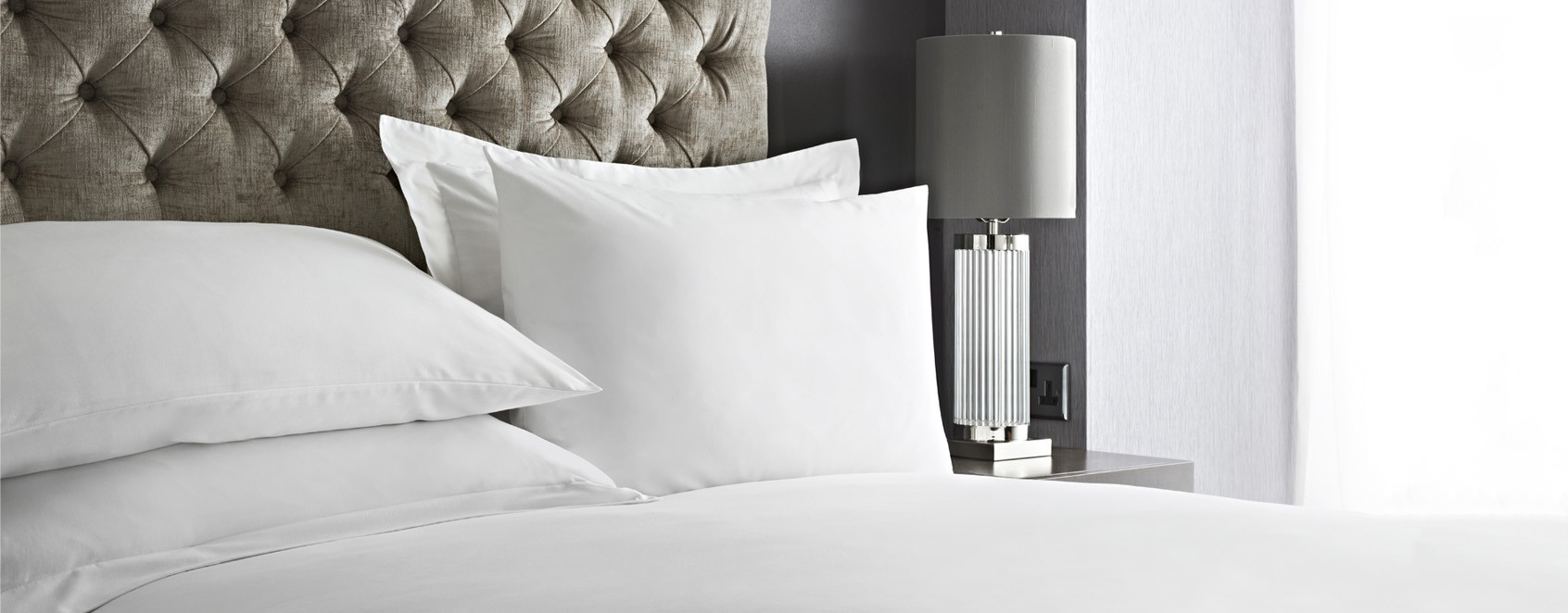We use cookies to make your experience better. To comply with the new e-Privacy directive, we need to ask for your consent to set the cookies. Learn more.
Glossary of Textile Terms
Glossary of Textile Terms
Ever wondered what mercerization or stentering means? Our glossary of textile terms acts as a dictionary of terminology within the textiles industry. It is unnecessary to learn these definitions by heart but make sure you keep our guide bookmarked so that you can easily refer to it when required.
BlendA term applied to a yarn or fabric that is made up of more than one fibre or two different yarns are twisted or spun together. In textile rental the most common blended yarns are cotton/polyester.
CardingCarding removes dirt and matter and then separates the fibres and roughly lines them up so they all lie in the same direction. This process eliminates any fibres too short to be spun into yarn.
Combed CottonThis is an additional step beyond carding where fine brushes are used to pull out any remaining impurities. Approximately 15% of the volume is removed leaving behind only long straight fibres. The texture of combed cotton is softer because it lacks short fibres to stick out. Combed cotton is also stronger because weaker fibres have been removed. As the combing process removes volume and adds a step in the process the resulting textile will be slightly more costly.
CottonA natural fibre that grows in the seed pod of a cotton plant. Fibres are usually ½" to 2" inches long. The longest staple fibres longer than 1½" including Pima & Egyptian produce the highest quality cotton fabrics.
DamaskA patterned design produced on a jacquard loom.
Dobby LoomProduces plain weave cloth or geometric, stripes etc.
Egyptian cottonEgyptian grown cotton with extra long staple cotton produced in the Nile delta.
GreigeThe term to describe an unfinished fabric – or loom state. Cotton is naturally a cream colour not white.
GsmGrams per square metre
JacquardWoven fabrics manufactured by using a jacquard attachment to a loom. This provides individual control of the warp yarns to achieve more complex designs.
LoomA machine used for weaving
MercerizationThis is used to describe a process of treating a thread, yarn or fabric to increase its lustre on the surface of the fabric and its colour retention and durability. The fabric is immersed in sodium hydroxide and then neutralized in acid. This causes the fibre to permanently swell and increases strength by up to 25%.
Pick or (weft)A filling yarn that runs crossways between selvedges.
PillingA tangled ball of fibres that appear on the surface of a fabric as a result of wear or continued friction or rubbing of the surface of the cloth.
PercaleA closely woven fabric that's smooth, firm, midweight and fine. Usually made of cotton from a minimum of 180 threads per square inch.
PolycottonA blend of polyester and cotton
PolyesterA manufactured fibre derived from coal, air water and petroleum. Polyester fibres are formed from a chemical reaction between acid and alcohol.
ResinA synthetic chemical compound applied to a fabric to give non – iron / easy care properties.
Satin WeaveA basic weave but the yarns are interlaced in such a manner that creates a smooth somewhat shiny surface is achieved.
SanforizingIs a process where the cloth goes through a machine with drums filled with hot steam. This process is done to control shrinkage of the fabric.
Shrinkage (Cotton)Warp and weft usually shrink at different rates. An average cotton product will shrink 6 -8% after washing at high temperature. Lower washing at 30/40ºC will cause less shrinkage
SingeingA process to burn off protracting fibres from the body of the fabric, to give a smooth surface. Cotton is by nature a hairy product.
SizingWarp yarns are coated with a sizing compound or starch mixture before weaving. The reason is to make the yarn smoother and stronger to withstand the strain of weaving. It can also increase fabric weight.
StenteringA fabric is passed through a machine called a stenter to smooth out the fabric, because after bleaching the cloth gets creased and wrinkled. This also controls the finished width of the fabric by tension.
Thread CountThe quality of bed linen is often conveyed by the thread count (TC)
It is calculated by counting the number of threads per square inch of the fabric in both directions. The number of threads is the total of threads in the warp is added to the number of threads in the weft. (i.e. 110 x 90) = 200 TC
Warp (also known as the ends)Warping is the processing of creating the base yarn that runs top to bottom on woven cloth
Weft (also known as picks)The weft yarns are woven in from side to side.
Yarn CountYarns are usually graded using a number 16’s 18’s 20’s 24’s 30’s 40’s 60’s. The higher the number the finer the yarn. Individual yarns can be twisted together. Two finer yarns twisted together in spinning are stronger than one thick yarn. This is called ‘two fold yarns’.


